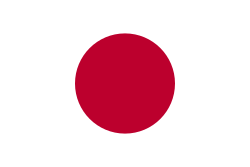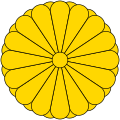| Japan is an island country in East Asia with a population of 124 million people as of 2024. Located in the Pacific Ocean off the Asian mainland’s northeast coast, Japan consists of four main islands – Hokkaido, Honshu, Shikoku, and Kyushu – plus thousands of smaller islands. Geography Shapes Nation The Japanese archipelago spans 3,000 kilometers, stretching from the Sea of Okhotsk to the East China Sea. The terrain is 67% forested and predominantly mountainous, concentrating the population along coastal plains. Japan sits on the Pacific Ring of Fire, making it prone to earthquakes and volcanic activity with 111 active volcanoes. Climate Varies North to South The climate ranges from humid continental in northern Hokkaido to subtropical in the southern Ryukyu Islands. The Pacific coast experiences mild winters and humid summers, while the Sea of Japan coast receives heavy snowfall. The highest recorded temperature reached 41.1°C in 2018 and 2020. Historical Evolution Ancient Foundations Human settlement dates back to 38,000 years ago. The Jomon period brought semi-sedentary hunter-gatherers, while the Yayoi people introduced rice farming and metallurgy. Buddhism arrived in 552 CE, profoundly influencing Japanese culture. Feudal Period The samurai warrior class emerged as rulers in 1185. The Tokugawa shogunate unified Japan in 1600 and implemented an isolationist policy until 1853. This period saw the development of distinctive Japanese arts and culture. Modern Transformation Japan modernized rapidly after 1868’s Meiji Restoration. It became an industrial power but pursued military expansion, leading to World War II defeat in 1945. Post-war Japan embraced democracy and achieved remarkable economic growth, becoming the world’s fourth-largest economy. Government Structure Japan functions as a constitutional monarchy with Emperor Naruhito as ceremonial head of state. The parliament (National Diet) consists of two houses with 465 representatives and 245 councillors. Shigeru Ishiba serves as Prime Minister in 2024. Economic Powerhouse The Japanese economy ranks fourth globally by nominal GDP. It excels in automotive manufacturing, electronics, and robotics. The country faces challenges including high public debt (248% of GDP) and an aging population. Cultural Identity Japanese society maintains strong cultural traditions while embracing technological innovation. The population is predominantly urban, with the Greater Tokyo Area housing 38 million residents. The Japanese language uses a complex writing system combining kanji and kana scripts. Japanese motorcycles revolutionized the global motorcycle industry through innovation, reliability, and performance. The “Big Four” manufacturers – Honda, Kawasaki, Suzuki, and Yamaha – transformed motorcycling from 1969 onwards with their groundbreaking designs and engineering excellence. Historical Impact The Honda CB750 created the superbike category in 1969. This motorcycle introduced several firsts: transverse-mounted inline-four engine, front disc brakes, electric start, and overhead camshaft. Honda sold nearly 400,000 CB750s over two decades. Universal Japanese Motorcycle Era The term “Universal Japanese Motorcycle” (UJM) emerged in the mid-1970s. UJMs featured: Four-cylinder engines Standard riding position One carburetor per cylinder Unit construction Disc front brakes Conventional tubular frames Engineering Excellence Japanese manufacturers excel in: Advanced engine designs Precision manufacturing Reliable performance Innovative technology The Kawasaki H2 and Suzuki Hayabusa showcase Japan’s engineering capabilities with record-breaking speeds and performance. Modern Challenges Recent quality concerns have emerged: Decreased build quality in mid-range models compared to 1990s bikes Wiring loom issues on newer models Cost-cutting affecting finish quality Slower development cycles due to hierarchical corporate structure[5] Current Market Leaders Popular current models include: Honda Rebel 300: Excellent urban cruiser Suzuki DR-Z400SM: Reliable supermoto Yamaha YZF-R7: Efficient commuter Kawasaki Ninja ZX-25R: High-performance small displacement Reliability Comparison Japanese motorcycles maintain strong reliability ratings[6]. Modern bikes offer: Extended service intervals Robust engine construction Proven engineering designs Extensive dealer network support The combination of performance, reliability, and value continues to define Japanese motorcycles despite recent quality concerns in some mid-range models. |
Japan is an island country in East Asia. Located in the Pacific Ocean off the northeast coast of the Asian mainland, it is bordered to the west by the Sea of Japan and extends from the Sea of Okhotsk in the north to the East China Sea in the south. The Japanese archipelago consists of four major islands alongside 14,121 smaller islands. Japan is divided into 47 administrative prefectures and eight traditional regions, and around 75% of its terrain is mountainous and heavily forested, concentrating its agriculture and highly urbanized population along its eastern coastal plains. With a population of over 123 million as of 2025, it is the world's 11th most populous country. Tokyo is the country's capital and largest city.
Japan | |
|---|---|
| Anthem: 君が代 ("Kimigayo") "His Majesty's Reign" | |
| State seal: 大日本國璽 (Dai Nihon Kokuji) "National Seal of Greater Japan"  | |
 Location of Japan | |
| Capital and largest city | Tokyo 35°41′N 139°46′E / 35.683°N 139.767°E |
| National language | Japanese |
Regional languages |
|
| Demonym | Japanese |
| Government | Unitary parliamentary constitutional monarchy |
• Emperor | Naruhito |
| Sanae Takaichi | |
| Legislature | National Diet |
| House of Councillors | |
| House of Representatives | |
| Formation | |
| November 29, 1890 | |
| May 3, 1947 | |
| Area | |
• Total | 377,975 km2 (145,937 sq mi) (62nd) |
• Water (%) | 1.4 |
| Population | |
• June 1, 2025 estimate | |
• 2020 census | |
• Density | 330/km2 (854.7/sq mi) (39th) |
| GDP (PPP) | 2025 estimate |
• Total | |
• Per capita | |
| GDP (nominal) | 2025 estimate |
• Total | |
• Per capita | |
| Gini (2020) | medium inequality |
| HDI (2023) | very high (23rd) |
| Currency | Japanese yen (¥) |
| Time zone | UTC+09:00 (JST) |
| Calling code | +81 |
| ISO 3166 code | JP |
| Internet TLD | .jp |
The first known habitation of the archipelago dates to the Upper Paleolithic, with the beginning of the Japanese Paleolithic dating to c. 36,000 BC. Between the 4th and 6th centuries, its kingdoms were united under an emperor in Nara and later Heian-kyō. From the 12th century, actual power was held by military aristocrats known as shōgun and feudal lords called daimyō, enforced by warrior nobility named samurai. After rule by the Kamakura and Ashikaga shogunates and a century of warring states, Japan was unified in 1600 by the Tokugawa shogunate, which implemented an isolationist foreign policy. In 1853, an American fleet forced Japan to open trade to the West, which led to the end of the shogunate and the restoration of imperial power in 1868.
The Meiji period saw Japan pursue rapid industrialization, modernization, militarism, and overseas colonization. The country annexed Korea in 1910, invaded China in 1937, and attacked the U.S. and European colonial powers in 1941, thus entering World War II as an Axis power. After being defeated in the Pacific War and suffering the U.S. atomic bombings of Hiroshima and Nagasaki, Japan surrendered in 1945 and came under Allied occupation. It underwent rapid economic growth in the following decades and became one of the first major non-NATO allies of the U.S. Since the collapse of the Japanese asset price bubble in the early 1990s, it has experienced a prolonged period of economic stagnation referred to as the Lost Decades.
Japan is a constitutional monarchy with a bicameral legislature known as the National Diet. Widely considered a great power and the only Asian member of the G7, it maintains one of the world's strongest militaries but has constitutionally renounced its right to declare war. A developed country with one of the world's largest economies by nominal GDP, it is a global leader in the automotive, electronics, and robotics industries, in addition to making significant contributions to science and technology. It has one of the world's highest life expectancies, but is undergoing a population decline. The culture of Japan is well known around the world, particularly its popular culture as expressed in animation, art, comics, cuisine, fashion, films, music, television, and video games.
English
Etymology
From Japan, due to this varnishing process being an imitation of East Asian processes. Sense “to ordain” in reference to the black clothes worn by the clergy.
...


